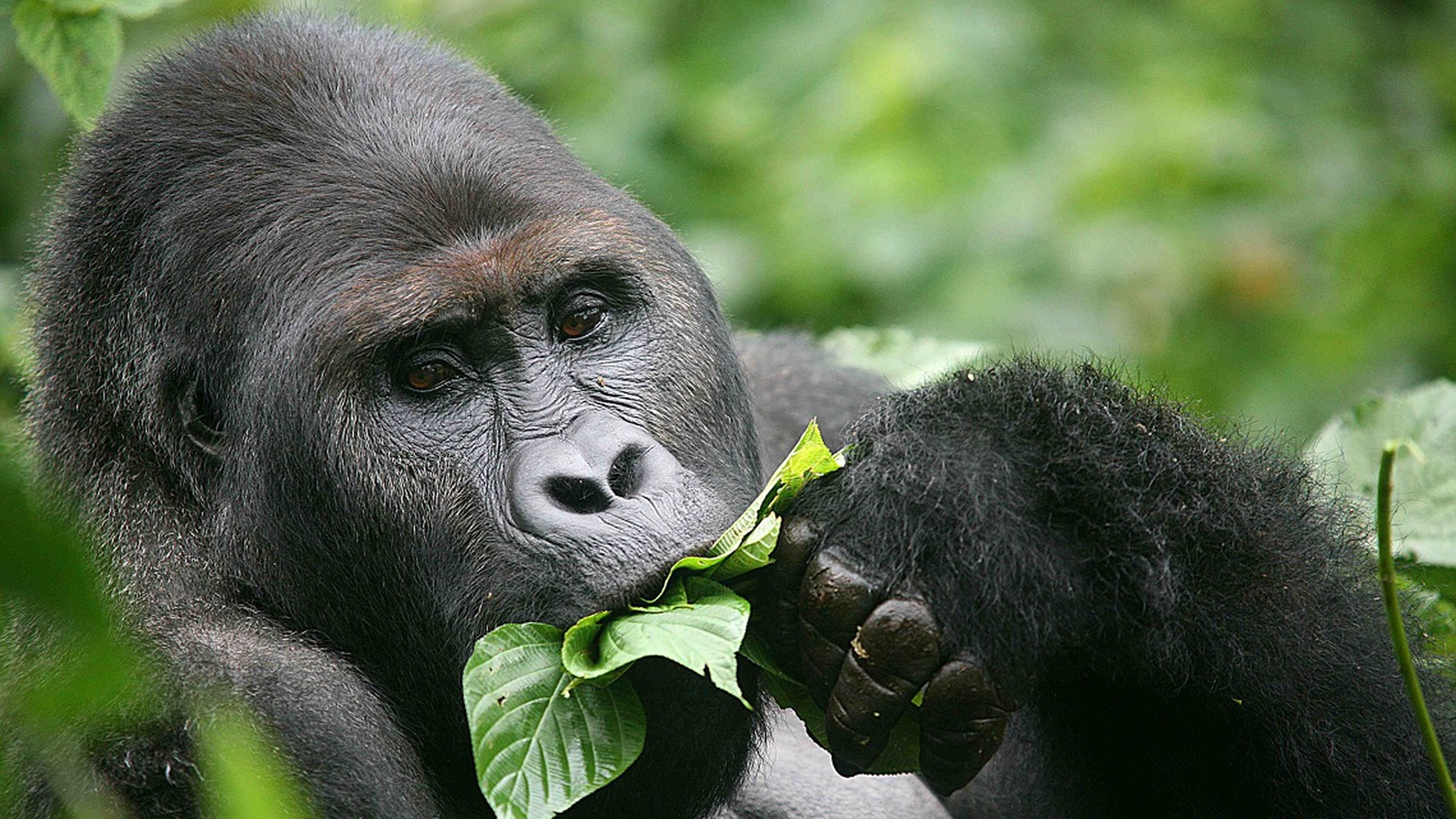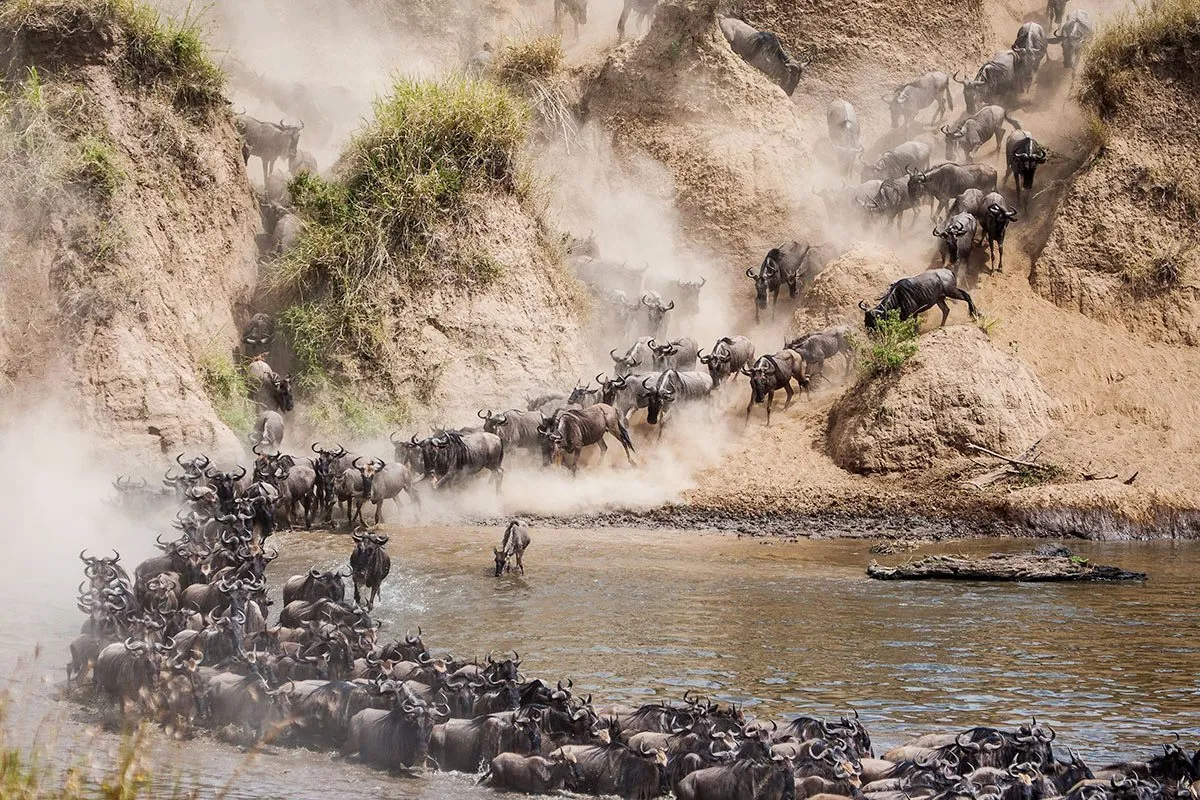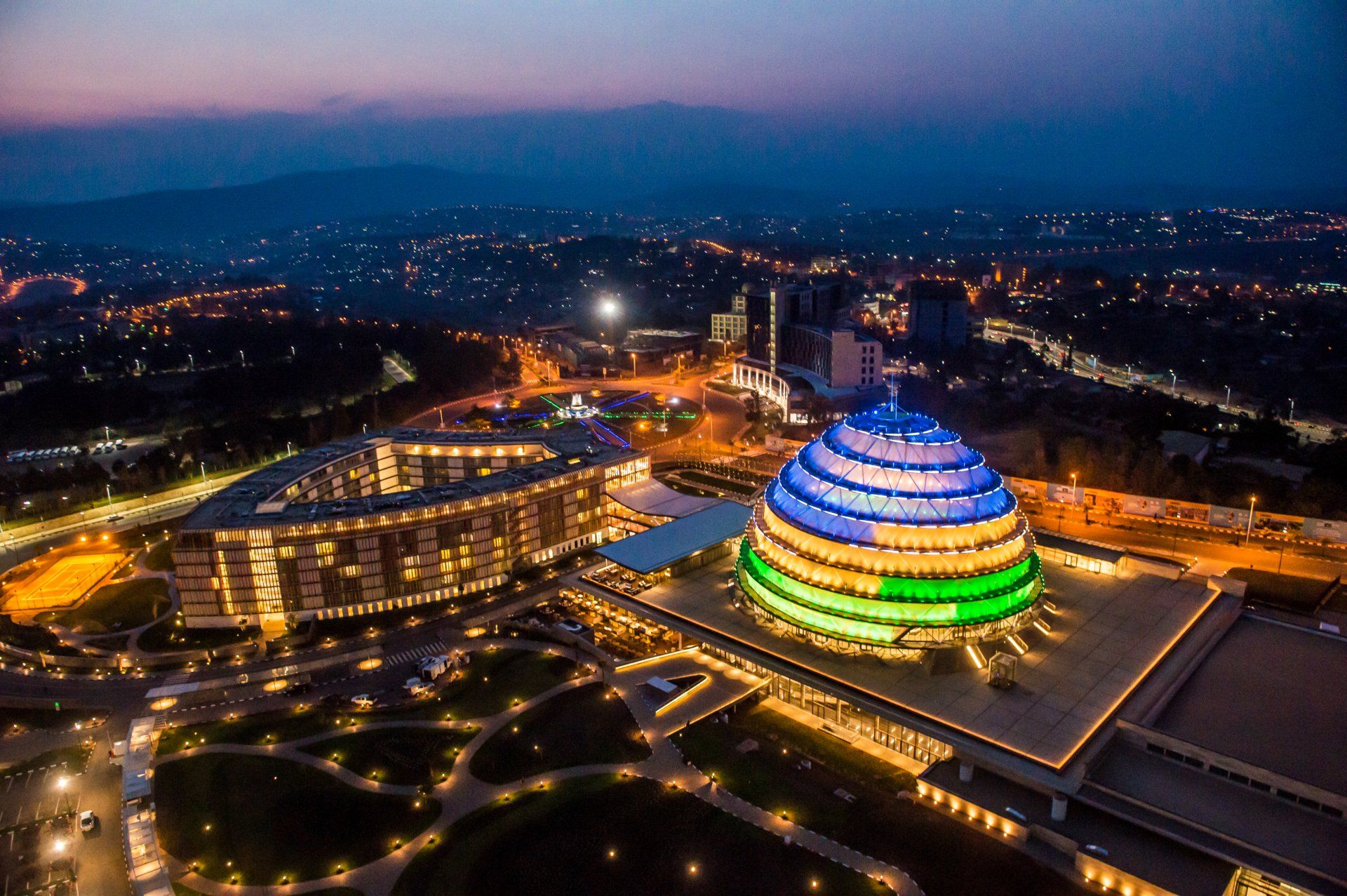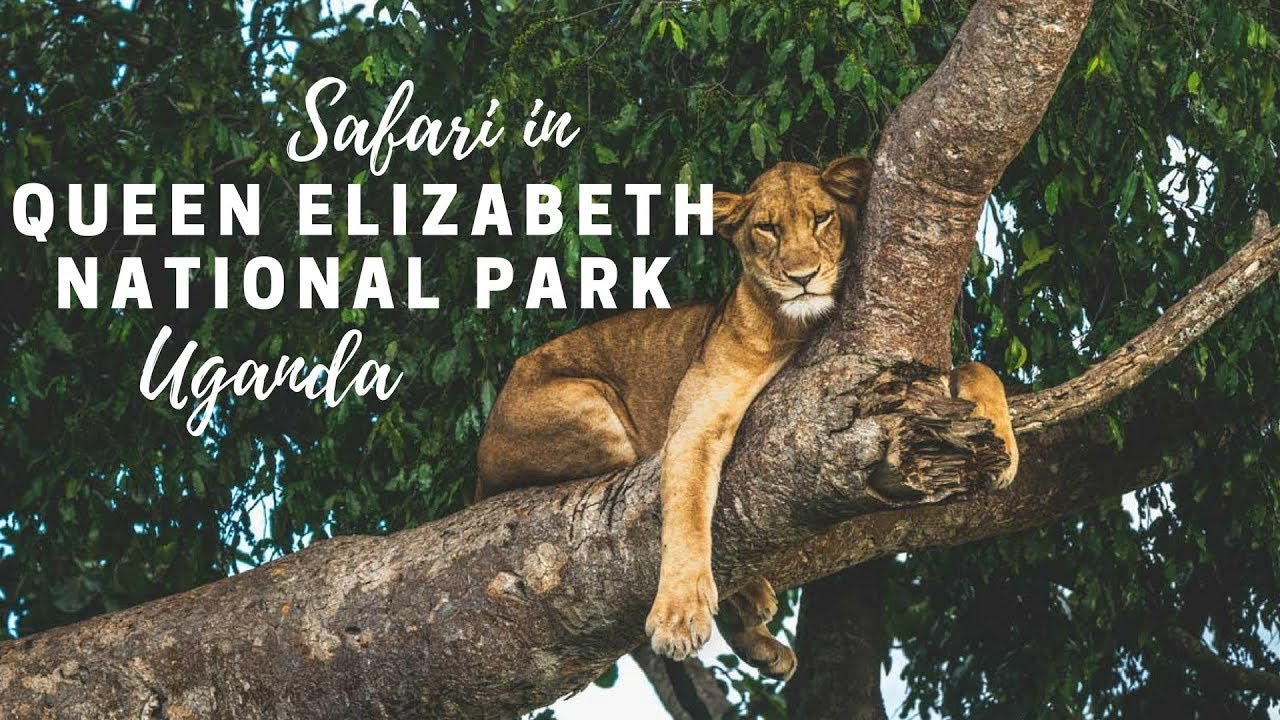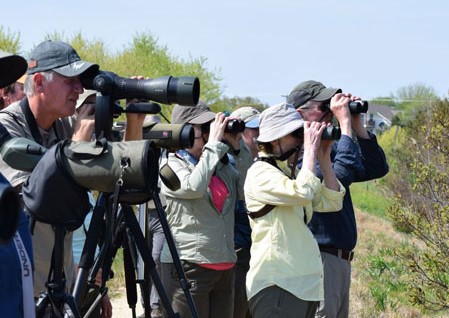Rwanda, known as the ‘Land of a Thousand Hills,’ is a hidden gem for birdwatchers and nature enthusiasts. This small but incredibly diverse East African nation is home to a remarkable array of bird species, making it a captivating destination for ornithologists and wildlife lovers alike. In this guided Birdwatching in Rwanda, we unveil the most Important Birding Areas in Rwanda, each offering a unique and rewarding opportunity to witness the country’s avian treasures. Whether you’re an avid birder or a casual observer, Rwanda Wildlife and Birding is sure to leave you spellbound.

Below are Best Birding Spots Rwanda and their uniqueness:
Nyungwe National Park is a breathtaking expanse of lush rainforest located in southwestern Rwanda. Spanning over 1,020 square kilometers, it is one of Africa’s oldest rainforests, estimated to be over 1,000 years old. This park is not only renowned for its stunning landscapes, which include rolling hills, waterfalls, and diverse ecosystems, but also for its exceptional biodiversity.
As one of the seven important birding areas in Rwanda, Nyungwe is a paradise for bird enthusiasts. The park is home to over 300 bird species, including several endemic and globally threatened species. Notable sightings include the Rwenzori turaco, the great blue turaco, regal sunbird, and the sought-after Albertine Rift endemics. The rich avian population is complemented by the park’s vibrant array of flora and fauna, including primates like the black-and-white colobus and the rare owl-faced monkey.
The park’s unique montane and lowland rainforest habitats provide critical nesting sites and feeding grounds for a variety of bird species. The diverse altitudes and microclimates create distinct ecological niches, making Nyungwe a hotspot for biodiversity. Birdwatchers can explore numerous trails, each offering a different glimpse into the park’s avian riches, while also enjoying the sounds of the forest and the chance to encounter other wildlife.
Nyungwe National Park is not only significant for its ecological importance but also for its role in conservation and community engagement. It serves as a model for sustainable tourism, where visitors can immerse themselves in nature while contributing to the preservation of this unique ecosystem. Overall, Nyungwe is a must-visit destination for anyone seeking to experience the natural beauty and avian diversity of Rwanda.
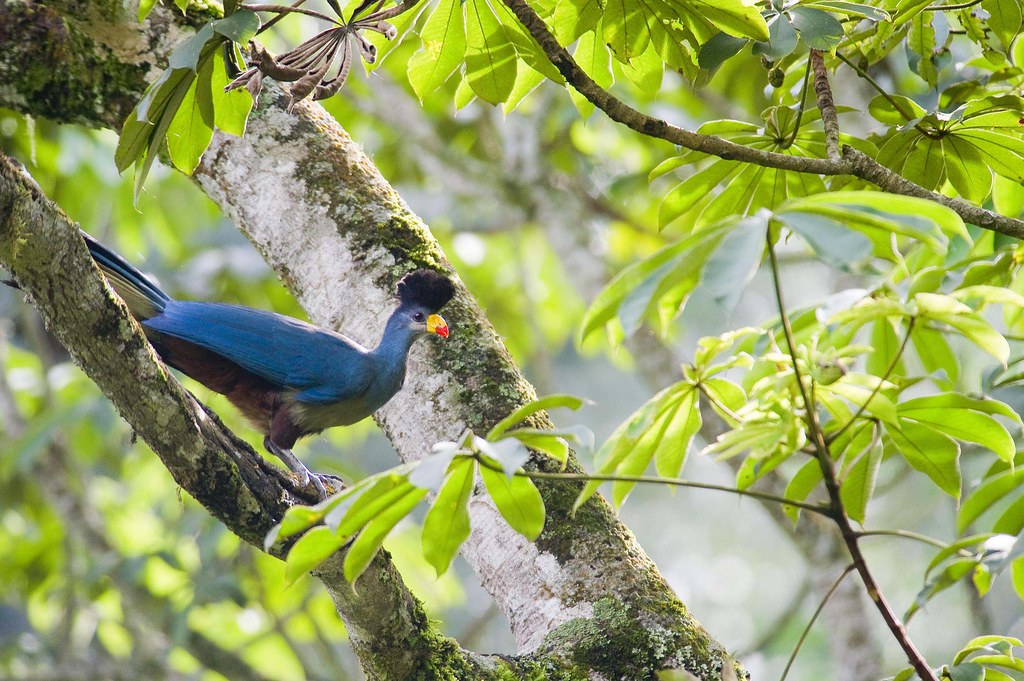
Volcanoes National Park, nestled in the breathtaking Virunga Mountains of Rwanda, is a treasure trove for birdwatchers and nature enthusiasts alike. This remarkable park, famous for its majestic mountain gorillas, is also recognized as one of Rwanda’s important birding areas, boasting a rich diversity of avian life.
The park’s unique blend of lush montane forests, bamboo groves, and open grasslands creates varied habitats that attract over 200 bird species with in 29 Albertine lift endemic species. Here, you can spot the striking Rwenzori turaco with its vibrant plumage, the elusive bird of paradise, and the charismatic blue-headed sunbird flitting among the foliage. The lush vegetation also supports an array of endemic species, including the rare and sought-after Rwandan collared flycatcher.
The cool, misty atmosphere adds a sense of enchantment to your birdwatching experience, as you wander along well-maintained trails under the towering peaks of the Virunga volcanoes. With its stunning scenery, diverse ecosystems, and the chance to witness incredible wildlife interactions, Volcanoes National Park offers a unique and unforgettable adventure for bird lovers, making it a must-visit destination in Rwanda.
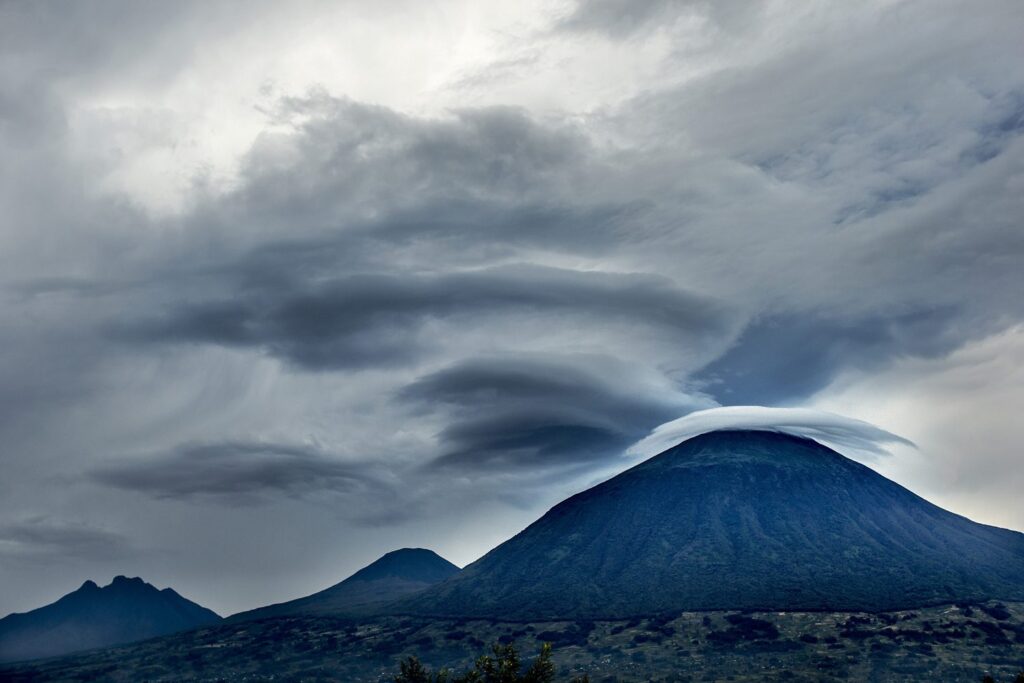
Gishwati-Mukura National Park, a hidden gem in Rwanda’s lush landscape, is a remarkable destination for bird enthusiasts and nature lovers. This park, straddling the picturesque hills of the Western Province, is a blend of dense forests, rolling hills, and pristine rivers, making it one of the country’s most important birding areas.
The park is home to an impressive diversity of avian species, with over 200 recorded. Birdwatchers can delight in spotting the stunning Albertine Rift endemics, such as the elusive and vibrant blue-headed sunbird and the striking Rwenzori batis. The harmonious sounds of chirping birds fill the air, as colorful species like the yellow-eyed black flycatcher and the great blue turaco flit among the canopy.
What sets Gishwati-Mukura apart is its unique ecosystem—comprising both montane and submontane forests that create varied habitats. The park is not only a sanctuary for birds but also for a myriad of other wildlife, including primates and diverse plant species. The serene trails meandering through the verdant landscape offer an intimate experience with nature, where the cool mist and vibrant greenery envelop you in tranquility.
Gishwati-Mukura National Park stands out not just for its birdwatching opportunities but also for its commitment to conservation and community engagement, making it a truly enchanting destination for anyone looking to connect with Rwanda’s rich biodiversity.

Akagera National Park, located in the eastern part of Rwanda, is a captivating mosaic of savanna, wetlands, and woodlands, making it one of the country’s prime birding destinations. This park is a sanctuary of biodiversity, where the landscapes create a rich tapestry of habitats that support an impressive variety of bird species.
With over 500 bird species recorded, Akagera is a true paradise for birdwatchers. The park’s wetlands are home to spectacular waterbirds, including the elegant African fish eagle and the striking shoebill, which can be seen gliding over the marshes or lurking in the reeds. The savanna areas offer sightings of colorful species such as the lilac-breasted roller and the vibrant golden-breasted bunting, adding splashes of color against the backdrop of the expansive landscapes.
What makes Akagera unique is its blend of ecosystems —ranging from open grasslands to dense woodlands and tranquil lakes— each attracting different bird populations and wildlife. The park’s lakes, like Lake Ihema, provide excellent opportunities for boat trips, allowing visitors to observe birdlife up close, including flocks of pelicans and storks taking flight against the sunset.
In addition to its avian wealth, Akagera is also home to a remarkable array of wildlife, including elephants, giraffes, and lions, making it an all-around natural wonder. The park’s commitment to conservation and community involvement enhances its charm, creating a haven not just for birds, but for visitors seeking an immersive experience in one of Rwanda’s most beautiful landscapes.
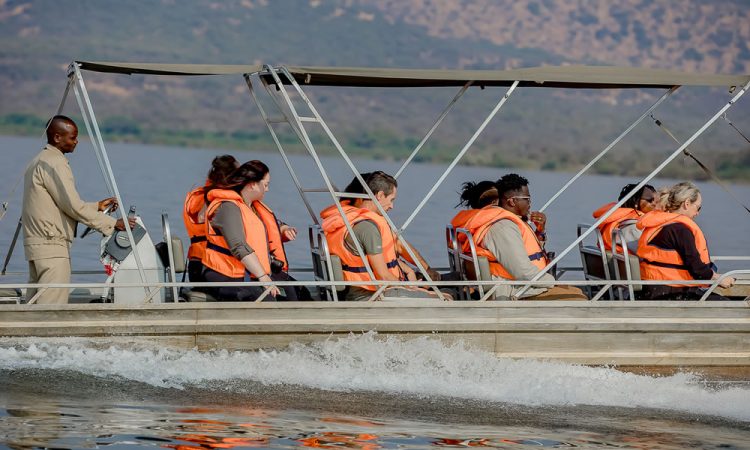
Rugezi Marsh, nestled in the heart of Rwanda’s diverse ecosystems, is a hidden gem that captivates birdwatchers and nature enthusiasts alike. This vast wetland, part of the larger Rugezi wetland complex, is renowned for its rich biodiversity and striking scenery, making it one of the country’s key birding hotspots.
The marsh is a paradise for bird lovers, hosting over 200 species, including many endemics and migratory visitors. Here, you can witness the graceful African marsh harrier soaring above the reeds, the vibrant papyrus gonolek calling from its perch, and the elusive bitterns hiding among the tall grasses. The unique combination of aquatic and terrestrial habitats attracts a plethora of birds, making each visit a new adventure in discovery.
What sets Rugezi Marsh apart is its pristine environment, characterized by lush vegetation, winding waterways, and breathtaking views of the surrounding hills. The tranquil atmosphere and rich flora not only support a vibrant avian community but also provide a sanctuary for other wildlife, including small mammals and a variety of insects
The marsh is also significant for its ecological importance, playing a vital role in water filtration and local agriculture. Birdwatching here can be a serene experience, as you stroll along well-defined paths or glide quietly in a canoe, taking in the beauty of nature all around you.
Rugezi Marsh is not just a destination for birding; it’s a place where you can connect with Rwanda’s natural heritage, making it a must-visit for those seeking the charm of the country’s unique wetlands and their feathered inhabitants.
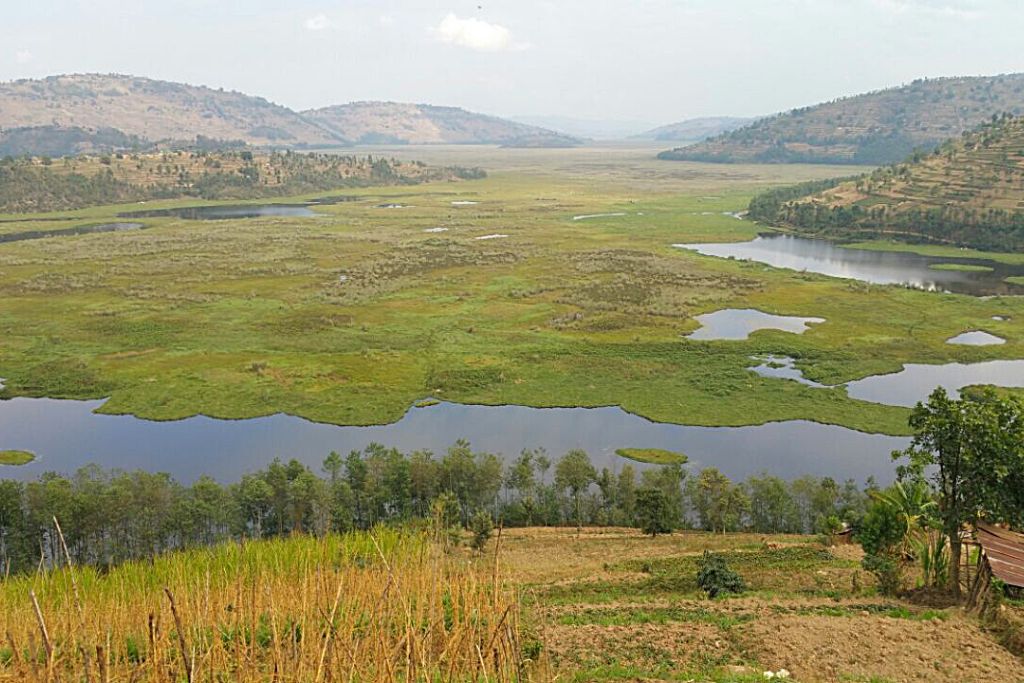
Lake Kivu, one of Africa’s Great Lakes, is a breathtakingly beautiful destination that embodies the essence of Rwanda’s natural splendor. Nestled between the lush, rolling hills of the countryside, this freshwater lake is not only a stunning sight but also a vital birding area teeming with diverse avian life.
The shores of Lake Kivu are adorned with a mix of sandy beaches, rocky outcrops, and vibrant wetlands, creating a rich tapestry of habitats. Here, birdwatchers can witness an incredible variety of species, from graceful pelicans and majestic herons to colorful kingfishers and energetic sunbirds. The presence of large populations of waterbirds adds to the excitement, making every visit a potential treasure trove of sightings.
What sets Lake Kivu apart is its unique blend of ecosystems. The tranquil waters support thriving fish populations, drawing in birds like the striking African fish eagle, known for its sharp vision and impressive hunting prowess. The surrounding vegetation, with its dense foliage and flowering plants, provides essential nesting sites and feeding grounds for both resident and migratory birds.
The serene atmosphere, enhanced by the gentle lapping of waves and the soft rustle of leaves, creates an enchanting environment for birdwatching. Visitors can embark on leisurely boat trips or wander along the picturesque shores, soaking in the stunning views of the lake against the backdrop of the dramatic Virunga Mountains. The vibrant sunsets casting golden hues over the water further elevate the experience, making it a photographer’s paradise.
Lake Kivu is not just a birding destination; it’s a place where nature comes alive, offering an unforgettable experience that connects you with Rwanda’s rich biodiversity. Whether you’re a seasoned birder or a casual observer, the charm and uniqueness of Lake Kivu make it a must-visit for anyone seeking to explore the wonders of Rwanda’s natural heritage.
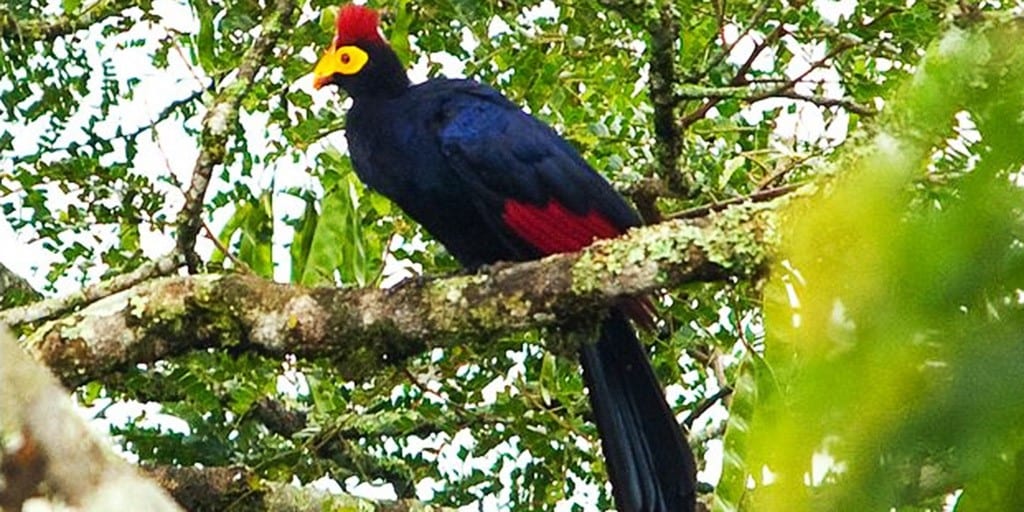
Nyabarongo Swamps, a hidden treasure in Rwanda’s diverse landscape, offer a captivating escape for birdwatchers and nature lovers alike. This expansive wetland area, located along the banks of the Nyabarongo River, is a vibrant ecosystem teeming with life, making it one of the country’s most important birding destinations.
The swamps are a paradise for bird enthusiasts, hosting a remarkable diversity of species. Here, you can spot an array of waterbirds, including the striking papyrus gonolek, the elusive marsh widowbird, and various herons and storks. The rich, dense vegetation provides ideal nesting habitats, allowing for fantastic opportunities to observe both resident and migratory birds throughout the year.
What makes Nyabarongo Swamps unique is their intricate network of waterways, reeds, and open water, which creates varied habitats that attract a wealth of avian life. The enchanting soundscape of chirping birds and the rustle of reeds in the breeze create a tranquil atmosphere, perfect for leisurely birdwatching excursions.
Exploring the swamps often reveals hidden gems: flocks of vibrant kingfishers darting through the air, while raptors soar above in search of prey. The serene beauty of the wetlands, with their reflection of the surrounding landscape, offers a picturesque setting for photography and quiet contemplation.
Nyabarongo Swamps are not just a birding hotspot; they are a serene sanctuary where nature flourishes. Whether you’re a seasoned birder or simply seeking a peaceful retreat, the charm and uniqueness of this wetland area promise an unforgettable experience in the heart of Rwanda’s wilderness.
TWIN LAKES
Twin Lakes, nestled in the heart of Rwanda, is a breathtaking birding destination renowned for its rich biodiversity and stunning landscapes. Comprising Lake Burera and Lake Ruhondo, this area is surrounded by lush hills and vibrant green tea plantations, creating a picturesque backdrop that captivates visitors.
The uniqueness of Twin Lakes lies in its diverse habitats, which include wetlands, grasslands, and montane forests. This ecological variety supports an impressive array of bird species, making it a paradise for birdwatchers. Over 200 bird species can be spotted here, including the striking shoebill stork, colorful sunbirds, and the elusive papyrus gonolek. The lakes also attract migratory birds, adding to the area’s avian diversity.
Beyond its birdlife, Twin Lakes offers a serene environment where visitors can enjoy hiking, boat rides, and cultural interactions with local communities. The combination of stunning natural beauty, abundant wildlife, and a rich cultural tapestry makes Twin Lakes a truly enchanting destination for nature lovers and bird enthusiasts alike.
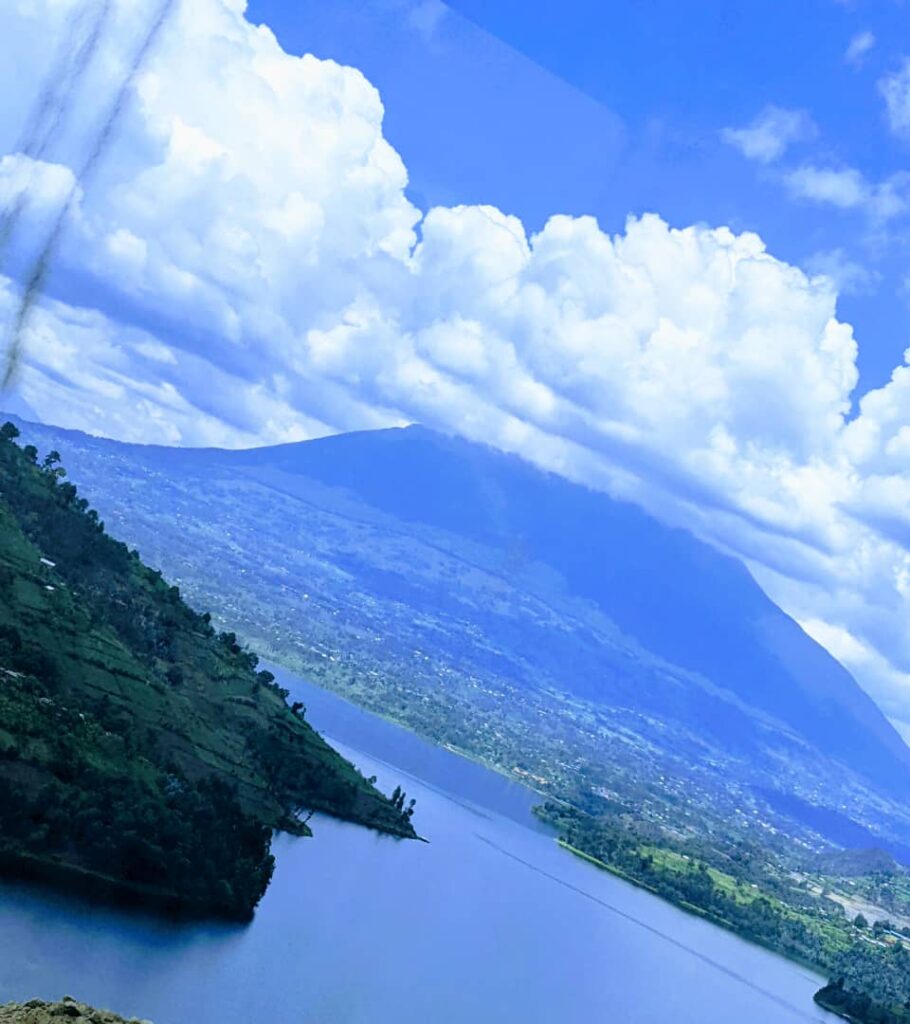
UMUSAMBI VILLAGE
Umusambi Village, a hidden gem in Rwanda, is a remarkable birding destination that harmoniously blends conservation, community, and natural beauty. Nestled near the capital, Kigali, this charming village is dedicated to the protection of the wetlands and the vibrant birdlife that thrives there.
The uniqueness of Umusambi Village lies in its commitment to sustainable tourism and conservation efforts. The village is home to a beautiful sanctuary that focuses on rehabilitating and protecting various bird species, including the stunning grey-crowned crane, which is a symbol of Rwanda’s natural heritage. Birdwatchers can enjoy the serene surroundings while spotting an array of species in their natural habitat, from colorful kingfishers to graceful herons.
What sets Umusambi Village apart is not just its avian diversity but also its warm community spirit. Visitors can engage with local initiatives, learn about traditional crafts, and experience the rich culture of the Rwandan people. The gentle, welcoming atmosphere, coupled with the tranquil wetlands and lush landscapes, makes Umusambi Village a delightful stop for anyone seeking a deeper connection with nature and community in Rwanda.
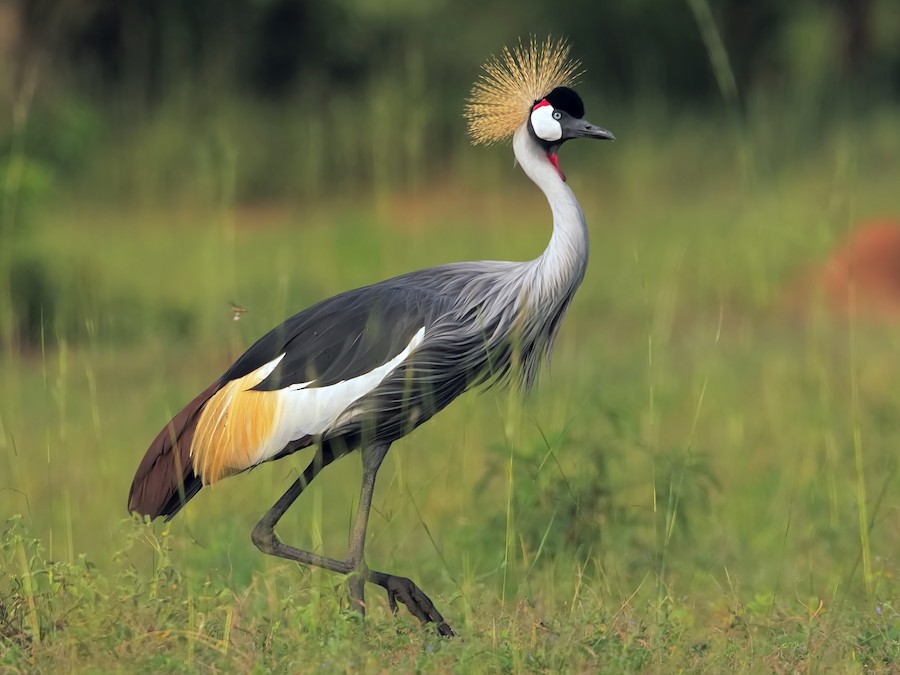
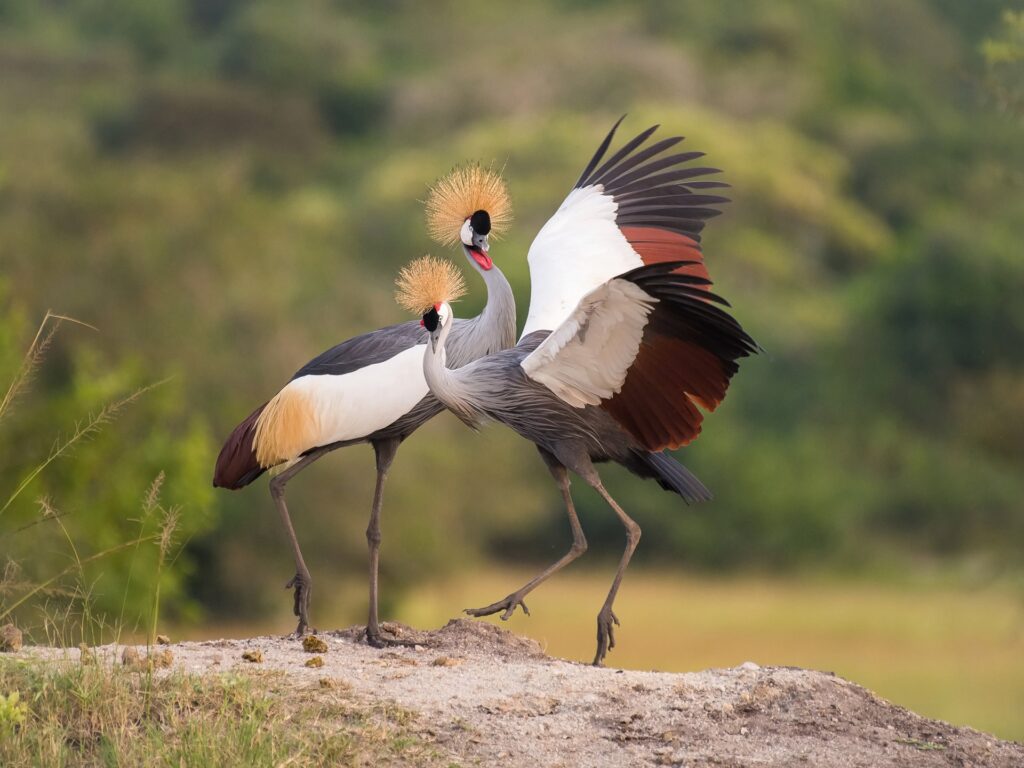
NYANDUNGU ECO-PARK
Nyandungu Ecopark is a captivating oasis in Rwanda, nestled just a stone’s throw from the bustling capital, Kigali. This serene park spans over 200 hectares and is a remarkable blend of lush wetlands, vibrant forests, and tranquil lakes, making it a haven for both nature enthusiasts and birdwatchers alike.
What sets Nyandungu apart is its rich biodiversity. The park is home to an impressive array of bird species, with over 150 recorded, including vibrant sunbirds, elusive herons, and colorful kingfishers. The diverse habitats within the park create perfect nesting grounds and feeding areas, allowing for spectacular birdwatching opportunities throughout the year.
In addition to its avian treasures, Nyandungu Ecopark is committed to conservation and sustainable tourism. Its well-maintained trails wind through scenic landscapes, offering visitors a chance to immerse themselves in the tranquil beauty of nature. Educational programs and community engagement initiatives further enhance the park’s mission to protect its unique ecosystem while fostering a love for wildlife among locals and visitors.
Overall, Nyandungu Ecopark is not just a birdwatching paradise; it’s a celebration of Rwanda’s natural heritage and a testament to the importance of preserving these vital habitats for future generations. Whether you’re a seasoned birdwatcher or a casual nature lover, a visit to Nyandungu promises enchanting encounters and unforgettable experiences in the heart of Rwanda’s ecological wonders.
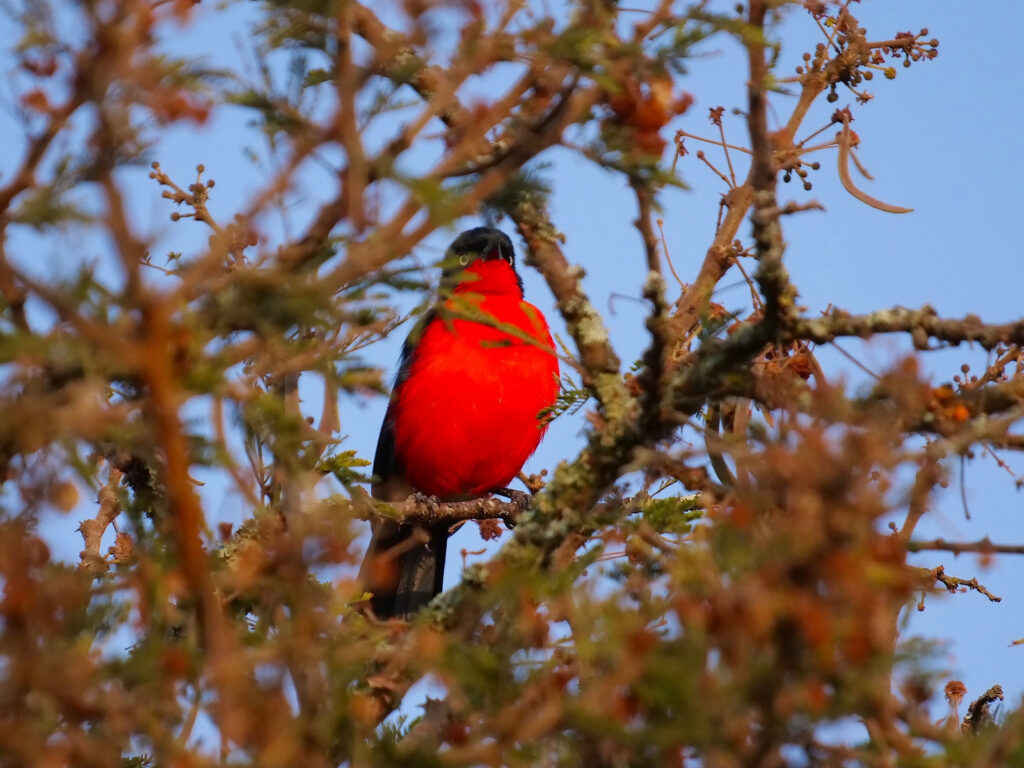
GIKONDO WETLAND
Gikondo Wetland, located just in Kigali, is a hidden gem for birdwatchers and nature lovers, showcasing the serene beauty of Rwanda’s diverse ecosystems. This expansive wetland covers several hectares and features a mosaic of marshes, open waters, and lush vegetation, creating an ideal habitat for a rich variety of bird species.
One of Gikondo’s unique charms is its vibrant avifauna. The wetland is home to over 100 bird species, including striking waterfowl like the African Jacana, colorful Kingfishers, and numerous migratory birds that stop here during their long journeys. The tranquil waters and abundant reeds provide perfect nesting spots and feeding grounds, allowing visitors to observe birds in their natural habitat.
The wetland also plays a crucial role in the local ecosystem, supporting a myriad of plant and animal life, including amphibians and small mammals. Its rich biodiversity makes it an important area for ecological studies and conservation efforts.
Gikondo Wetland is not just a birding hotspot; it’s a peaceful retreat where visitors can connect with nature. The area offers well-marked trails and viewing platforms that allow for unobstructed views of the vibrant birdlife and stunning landscapes. Local initiatives promote conservation and education, ensuring that this beautiful wetland remains a safe haven for wildlife while fostering a sense of stewardship among the community.
In essence, Gikondo Wetland is a delightful blend of natural beauty and ecological significance, making it an essential destination for anyone looking to experience the enchanting avian wonders of Rwanda. Whether you’re an avid birdwatcher or simply seeking a tranquil escape, Gikondo promises a memorable encounter with nature’s artistry
GATSATA WETLAND
Gatsata Wetland is a picturesque haven located on the outskirts of Kigali, offering a unique glimpse into Rwanda’s rich biodiversity. This enchanting area is characterized by its tranquil waters, lush vegetation, and the backdrop of rolling hills, making it a perfect spot for both birdwatching and relaxation.
What makes Gatsata particularly special is its impressive array of bird species. Over 120 species can be spotted here, including elegant herons, and vibrant warblers. The wetland’s diverse habitats—ranging from marshy areas to open water—provide ideal conditions for nesting and feeding, making it a hotspot for bird enthusiasts. Early morning visits reveal a symphony of birdsong, as the wetland comes alive with activity.
Gatsata Wetland’s accessibility and peaceful ambiance invite visitors to explore its winding paths and viewing points, providing ample opportunities to connect with nature. Local conservation efforts focus on protecting this vital habitat while promoting sustainable tourism, ensuring that Gatsata remains a thriving sanctuary for both wildlife and visitors.
In summary, Gatsata Wetland is a charming and important birding area that combines natural beauty with ecological significance. It’s a perfect destination for those looking to experience Rwanda’s avian diversity in a serene and scenic setting, offering memorable encounters with the wonders of nature.
LAKE MUGESERA
Lake Mugesera is a stunning freshwater lake situated in the eastern province of Rwanda, renowned for its rich biodiversity and picturesque landscapes. Enveloped by lush hills and vibrant wetlands, this tranquil body of water serves as a vital habitat for a plethora of bird species, making it a prime destination for birdwatchers and nature enthusiasts alike.
What makes Lake Mugesera truly unique is its remarkable avifauna. The lake is home to over 200 bird species, including impressive waterfowl, migratory birds, and captivating raptors. Highlights include the majestic African Fish Eagle, colorful Sacred Ibis, and the elusive African Pygmy Goose. The diverse ecosystems surrounding the lake—from marshy shorelines to wooded areas—provide varied habitats that support this rich birdlife, allowing for unforgettable sightings and photography opportunities.
In addition to its ecological importance, Lake Mugesera is a vital resource for local communities. The lake supports fishing and agriculture, contributing to the livelihoods of many families in the area. This connection to the community enhances the park’s charm, as visitors can often witness traditional fishing practices and experience the local culture.
The lake’s serene environment invites exploration, with opportunities for leisurely boat rides and scenic walks along its shores. The surrounding landscapes, dotted with vibrant flora and framed by rolling hills, create a picturesque backdrop that enhances the overall experience.
Lake Mugesera is not just a heaven for birds; it’s a place where nature and community intertwine, offering visitors a chance to immerse themselves in Rwanda’s natural beauty. Whether you’re an avid birdwatcher or simply seeking a peaceful escape, Lake Mugesera promises a delightful encounter with the wonders of Rwanda’s wildlife.
AKANYARU WETLAND AREA
Akanyaru Wetland Area, nestled along the border between Rwanda and Burundi, is a captivating ecosystem that enchants visitors with its lush landscapes and rich biodiversity. This vital wetland spans several kilometers and features a blend of marshes, grasslands, and open water, creating a haven for numerous bird species and other wildlife.
What sets Akanyaru apart is its remarkable avian diversity. Over 180 bird species have been recorded in this area, making it a must-visit for birdwatchers. Among its inhabitants are striking species like the Great Crested Grebe, colorful Malachite Kingfishers, and the majestic African Marsh Harrier. The wetland’s varied habitats provide ideal nesting and feeding grounds, offering visitors the chance to witness captivating bird behaviors throughout the year.
The beauty of Akanyaru is further enhanced by its stunning scenery, with rolling hills and vibrant vegetation framing the wetland. The tranquility of the area invites leisurely exploration, whether through guided birdwatching tours or self-directed walks along the numerous trails. Visitors often find themselves immersed in the soothing sounds of nature, from the rustling reeds to the melodic calls of the birds.
Moreover, Akanyaru Wetland plays a crucial role in supporting local ecosystems and communities. It serves as a vital water source for agriculture and fishing, making it an integral part of the livelihoods of nearby residents. Conservation efforts are in place to protect this unique habitat, emphasizing the importance of sustainability and community engagement.
In summary, Akanyaru Wetland Area is not just a significant birding site; it’s a harmonious blend of natural beauty, biodiversity, and local culture. Whether you’re an avid ornithologist or a casual nature lover, a visit to Akanyaru offers a serene escape and the chance to connect with the enchanting avian life of Rwanda.

